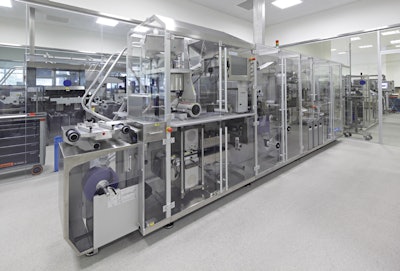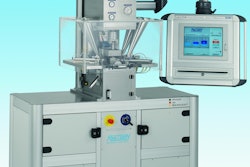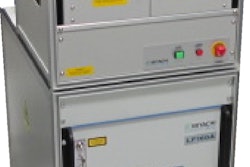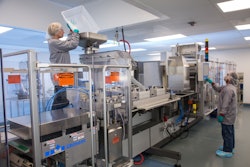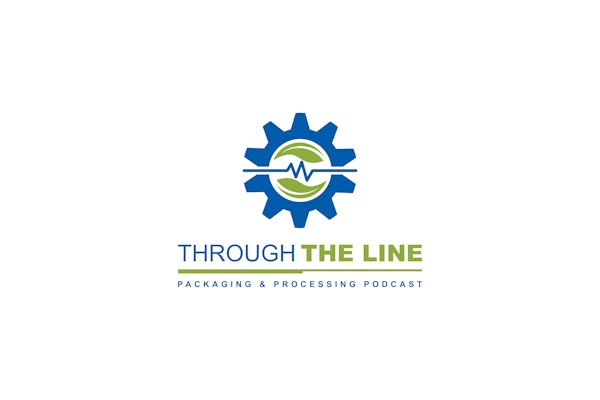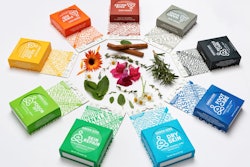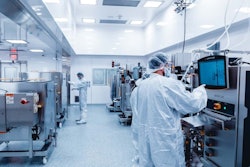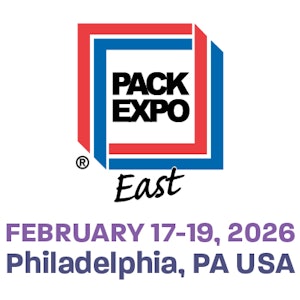The development cooperation between the Aenova Group and Romaco demonstrates how the production of blister packs can be further improved.
Global pharmaceutical markets are undergoing a period of change. In the next few years, many patents for so-called “blockbuster drugs” will expire and, as a result, some current studies predicting annual growth of 9% in generics production. The variety of products available and the pressure on prices will increase.
In the light of these changes, many pharmaceutical companies are increasingly outsourcing their manufacturing and packaging processes. Specialist pharmaceutical service providers are taking responsibility for the entire production process, right through to the delivery of the medicines. That means that these service companies must be able to respond flexibly to the requirements of the markets and accommodate fluctuations in demand. Competitive prices and strict adherence to delivery deadlines are essential components of the service.
Delivering on schedule is a core competence
“In addition to quality standards, we are primarily judged on whether we can deliver our products on time,” explains Georg Reiser, head of the packaging competence center at Aenova Holding GmbH in Bad Aibling. “The pharmaceutical markets are highly competitive. As the leading European manufacturer of solid dosage forms, including soft and hard gelatin capsules, tablets, and dragées, we have to supply the highest quality products at the best possible price in order to maintain our market position.”
The Aenova Group is a full-service provider headquartered in Pähl, Bavaria, with sites in Germany, Switzerland, France, Romania, and the U.S., where it develops, produces, and packages pharmaceutical and healthcare products on behalf of multinational clients. Aenova supplies its products to all five continents, but its primary markets are in Central and Eastern Europe, as well as North America.
Machinery is crucial
Orders in the packaging sector in particular vary considerably range in size. It is also important for service providers to keep up to date with the packaging designs and formats required in different countries. Around 600 million blisters are filled every year at Aenova’s three packaging sites.
“This is why we need machinery that we can fully rely on and that is tailor-made to meet our needs,” says Reiser. Aenova has been using blister-packaging machines from Romaco Noack for many years. It currently has nine individual machines and two production lines supplied by the engineering company in operation at its site in Bad Aibling, Bavaria.
A Noack 960R blister-packaging line with rotary sealing that provides a maximum output of 600 blisters/min is the most recent addition. It was installed in August 2012. The system includes Romaco’s Promatic PC 4250 continuous-motion cartoner and offers an end-to-end solution for packaging tablets, capsules, and oblongs. The new line is the result of the most recent development cooperation between Aenova and Romaco Noack.
Development cooperation generates new impetus
The cooperation between the two companies focused on ensuring that the blister line was easy to use and on shortening the changeover and cleaning times. The aim was to enable one employee to change the product and the packaging within a very short period.
A systematic approach was taken to achieving this objective, using a blister line model from the same family as the prototype. The Noack 930, which in principle is identical, has been in operation at Aenova since the summer of 2011. All the processes in this line were tested step-by-step under real production conditions and their potential for development was evaluated. The results of the tests were incorporated into the design of the new blister line.
“We were particularly impressed by Romaco’s single-minded approach to developing and improving its blister packaging systems,” says Reiser. “The new Noack 960R is highly reliable and meets all the technical requirements that we specified during the planning process.”
Dual ‘QuickFeed’ system
The weekly production volume of the new blister line is between 15 and 20 batches. It can be used, among other things, for packaging multi-phase products, where there is a difference between the morning and the evening dose, for example. These products are generally supplied in combined blisters. For this purpose, Romaco Noack has equipped the new line with two feed units, which allow the blisters to be filled with two different products.
During product changes, the patented “QuickFeed” technology makes it possible to remove the entire feed unit without tools in a matter of seconds. An airglide system enables the entire feed unit to be transferred to a special transport truck and moved to a specially equipped assembly room, where the format parts are removed, all the components are
cleaned and the new tools are fitted. During the changeover and cleaning period, production can continue with the second QuickFeed unit.
“It is very important to us that our internal logistics enable us to fully exploit the potential of the QuickFeed technology,” explains Reiser. “We are focusing on implementing a modern lean management system and Romaco Noack’s systems are helping us to make full use of our capacity.”
Continuous process control
A further important requirement for efficient primary and secondary packaging processes is reproducible process parameters. All the production data is entered and accessed via the user-friendly operating terminal of the blister line. Processes that have been saved can be repeated at any time and current batch data can be checked quickly.
A total of 17 servo drives control the process of packaging the products into blisters and cartons. For example, the QuickAdjust station control systems are responsible for the coding, perforating, and die-cutting processes. The servo drives automatically compensate for variations in foil characteristics.
A servo-controlled robotic transfer station moves the blisters to the cartoner.
A lifting and turning unit removes the packages from the die-cutting station and a vacuum conveyor is used to transfer them to the stacking station where they are placed directly into the bucket chain of the cartoner. The high level of automation results in reliable processes and excellent product quality. “We have been impressed by the outstanding efficiency of the entire Noack 960R blister packaging line, together with the reduction in downtime and the very good price/performance ratio,” concludes Reiser.
